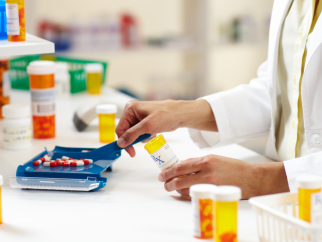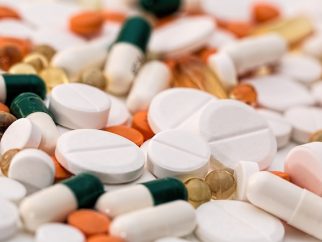Vitamins and minerals are essential substances that our bodies need to develop and function normally and stay healthy. Knowing when you need a supplement, which kind of vitamins and minerals are best, and how much your body needs can be confusing.
Where do you start?
Food vs. Supplements
Experts agree – supplemental vitamins can’t replace a nutritious diet.
According to Mayo Clinic, whole foods – such as fruits, vegetables, grains and dairy products – have benefits you can’t find in a supplement, including greater nutrition, essential fiber and phytochemicals. Not to mention, these foods are easier on the wallet. “Vitamins and minerals obtained through food sources are likely cheaper and easier to absorb than those found in supplements,” said Kayla Cole, RDN, LRD, a dietitian at Trinity Health.
Examples of vitamin-rich foods include carrots, beans, peas, spinach, sweet potatoes, apricots, lean meats, poultry, fish, peanuts and peanut butter, whole grains, bananas, berries, citrus fruits, eggs and other dairy products.
Choosing Supplements
While supplements do not offer all the benefits of whole foods, there are times when taking vitamins in the form of a pill, gummy or chewable may be appropriate. “Vitamins can fill in the gaps if you are unable to take in everything you need by food,” said Cole.
There are several factors to consider when deciding which vitamins to take including gender, age, deficiencies, quality, allergies and intolerances, disease or other conditions that affect nutrient intake. For example, if you’re pregnant or trying to become pregnant, nutrients like folic acid, iron and calcium are needed to protect your health and the health of your developing baby. Following menopause, additional calcium and vitamin D can help protect against osteoporosis and the risk of fractures.
If you don’t consume the recommended daily servings of fruit, vegetables and other healthy foods, you may benefit from a multivitamin that contains a variety of essential nutrients. “A multivitamin is considered a good starting place for most people who feel their diet is not
complete,” said Cole. Multivitamins can also be beneficial if you are vegetarian or vegan, have food allergies or intolerances, or have a disease or condition that doesn’t allow you to digest or absorb nutrients properly.
Your primary care provider, a dietitian or a pharmacist can help determine your specific needs and the supplements best suited to meet them.
Safe Usage
In general, vitamins are safe, but they should be used wisely.
1) Look for “USP Verified” on the label. This label ensures the product meets strength, quality and purity standards set forth by the testing organization U.S. Pharmacopeia.
2) Avoid megadoses. Finding and maintaining the right balance of vitamins and minerals is important for good health. However, getting too much of some nutrients can be dangerous. “Avoid megadoses,” said Cole. “High-dose supplements can cause toxic levels of nutrients to build up in your body. Know the tolerable upper intake level of the supplement you are taking.”
3) Seek medical advice. Before taking any supplement, visit with your primary care provider, a pharmacist or dietitian, especially if you have any health problems or are taking medication. Many supplements have possible drug interactions and side effects.
Key Terms
In order to better understand vitamins and minerals, it helps to know a few key terms such as:
Recommended Dietary Allowance (RDA)
The amount of each vitamin and mineral needed daily to meet the needs of nearly all healthy people, as determined by the Food and Nutrition Board of the Institute of Medicine. RDAs for vitamins and minerals are based on your sex, age and physical condition, such as pregnancy.
Adequate Intake (AI)
An AI is a recommended intake level of certain nutrients based on estimates of how much healthy people need. It’s used when there isn’t enough data to establish an RDA.
Daily Value (DV)
This term, set by the Food and Drug Administration, is used on food and supplement labels. DVs are based on a 2,000- calorie-a-day diet, but your DVs may be higher or lower, depending on your calorie needs.
Percent Daily Value
What percentage of the DV one serving of a food or supplement supplies. For instance, if the label on a multivitamin bottle shows that 30% of the DV for a vitamin is provided, you’ll need 70% from other sources throughout the day to meet the recommended goal.
Tolerable Upper Intake Level (UL)
A UL is defined as the highest level of daily intake that is likely to pose no risk of adverse health effects. This amount includes how much of a nutrient you get from both food and supplements.
Source: Mayo Clinic


